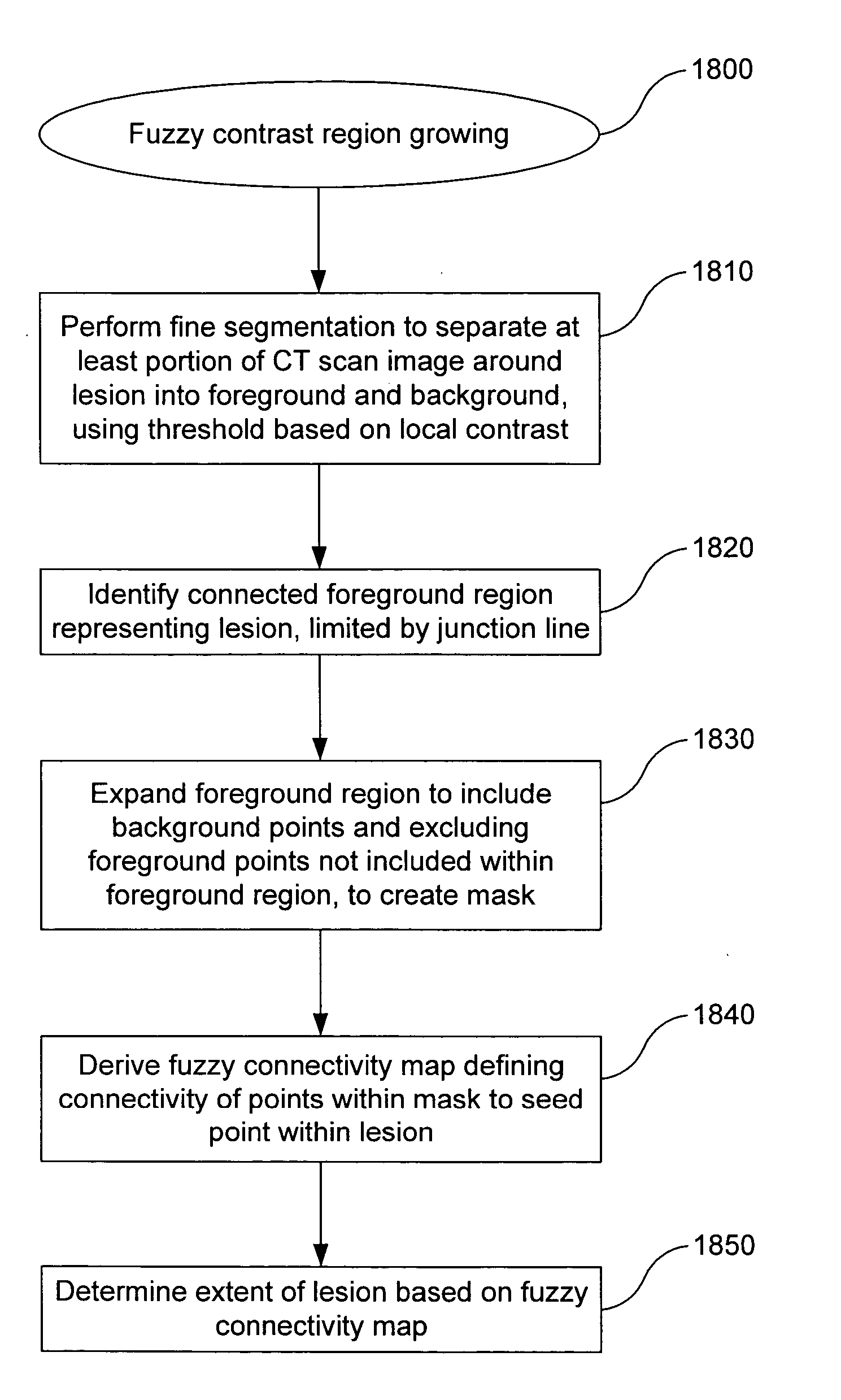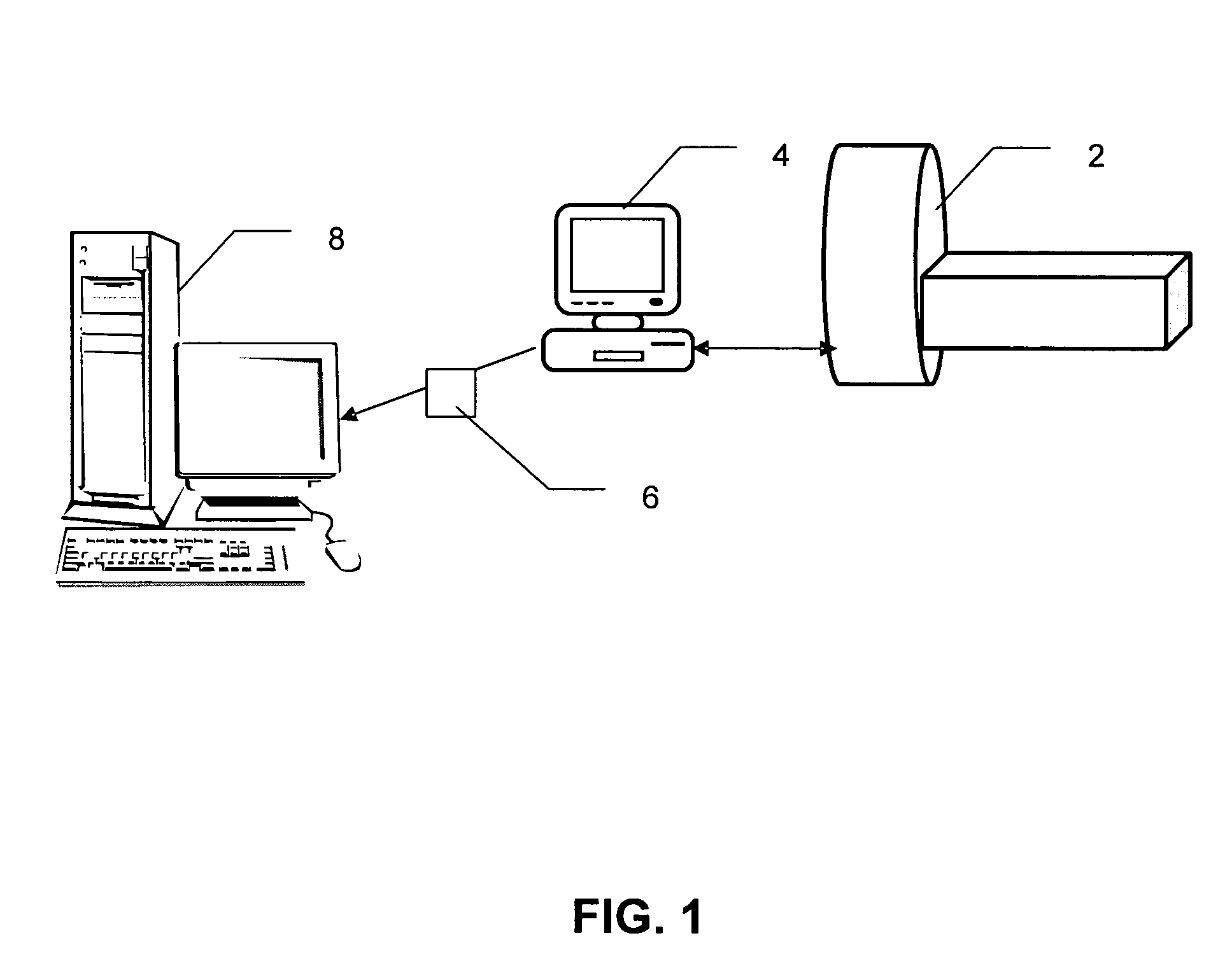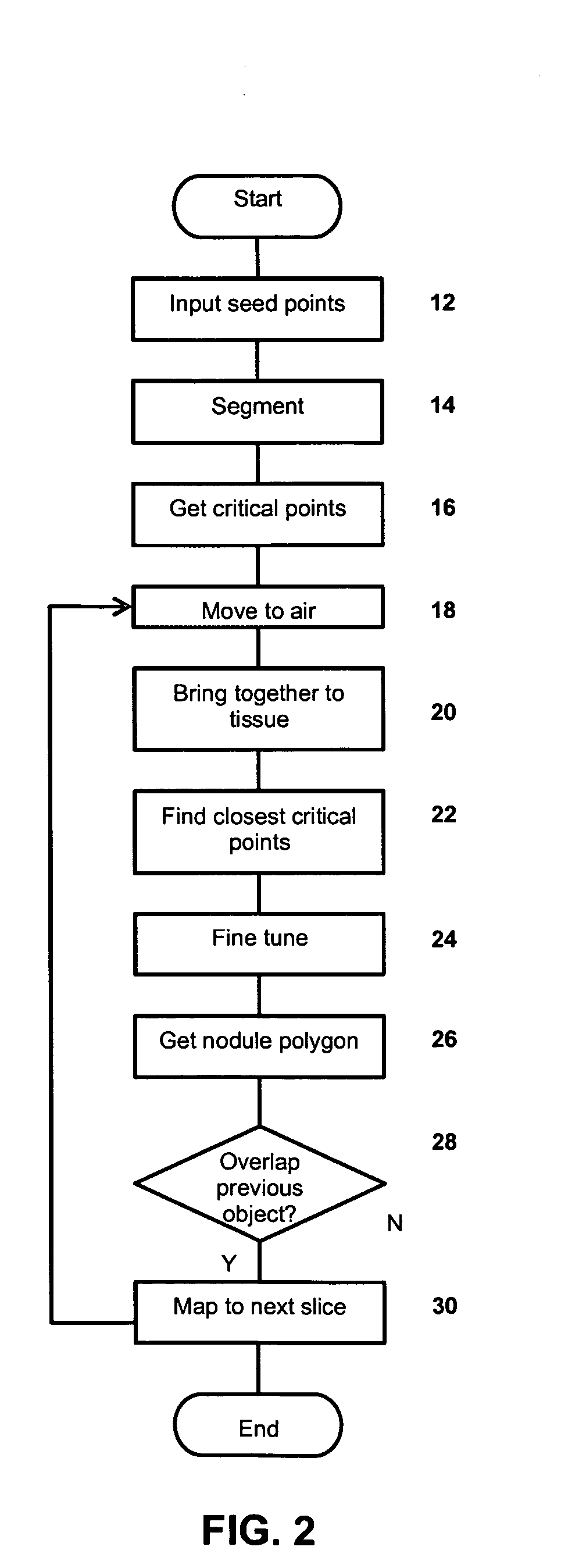Lesion boundary detection
a lesion and boundary detection technology, applied in the field of lesion boundary detection, can solve the problems of difficult to detect the extent of a lung nodule attached to the pleura, difficult to separate a nodule, difficult to detect the boundary between a polyp and the colon wall,
- Summary
- Abstract
- Description
- Claims
- Application Information
AI Technical Summary
Benefits of technology
Problems solved by technology
Method used
Image
Examples
first embodiment
[0101] In a first embodiment, an approximation may be made that the nodule N is not attached to or proximate to any features other than the pleura P. The result of the segmentation step may be used to identify all of the foreground region beyond the line joining the junction points as forming part of the nodule N, as shown in FIG. 15.
second embodiment
[0102] In a second embodiment, and referring to FIG. 18, a fuzzy contrast region growing scheme 1800 may be used to identify the boundary of the nodule N. A rough estimate of the extent of the nodule N may be obtained by means of a local threshold-based segmentation process at block 1810. A local mask may be used to derive a threshold intensity value for each point. The threshold typically is sensitive to the local contrast and usually can distinguish low contrast nodules from their background. The nodule area N acquired by fine segmentation may include ‘holes’, i.e. background pixels surrounded by foreground pixels. The holes can occur based on the sensitivity of the fine segmentation to small local differences in contrast. A hole-filling algorithm may be used to fill such holes. For instance, the hole-filling algorithm may convert the holes to foreground pixels. Any suitable hole-filling algorithm may be used.
[0103] The pixel having the highest intensity within the nodule area N i...
PUM
 Login to View More
Login to View More Abstract
Description
Claims
Application Information
 Login to View More
Login to View More - R&D
- Intellectual Property
- Life Sciences
- Materials
- Tech Scout
- Unparalleled Data Quality
- Higher Quality Content
- 60% Fewer Hallucinations
Browse by: Latest US Patents, China's latest patents, Technical Efficacy Thesaurus, Application Domain, Technology Topic, Popular Technical Reports.
© 2025 PatSnap. All rights reserved.Legal|Privacy policy|Modern Slavery Act Transparency Statement|Sitemap|About US| Contact US: help@patsnap.com



